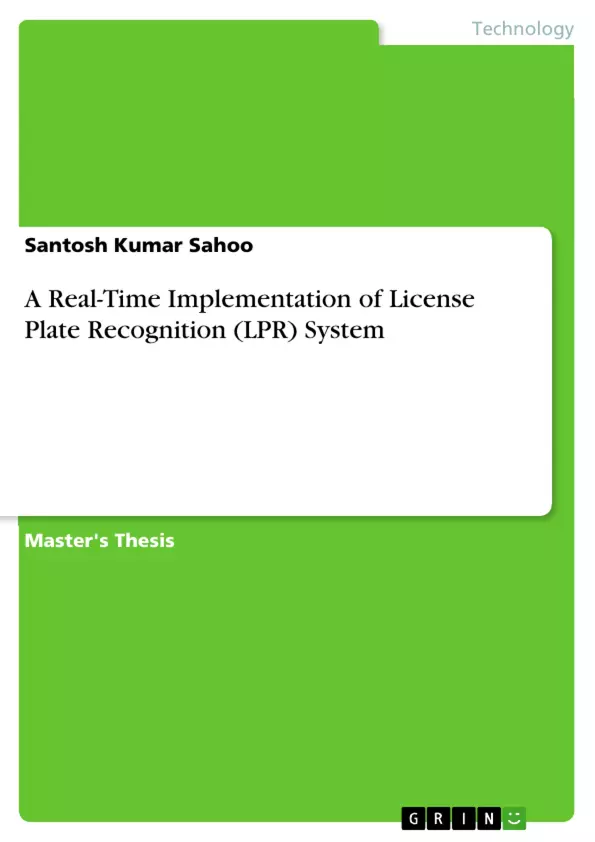With increasing number of population and higher rate of development the problem of road accident is also increasing rapidly. So the basic concept is to develop a model that can be useful as a security system in the society and can monitoring the vehicle speed.
A License Plate Recognition (LPR) System is one kind of an Intelligent Transport monitoring System and is of considerable interest because of its potential applications in highway electronic toll collection and traffic monitoring systems. This type of applications puts high demands on the reliability of an LPR System. A lot of work has been done regarding LPR systems for Korean, Chinese, European and US license plates that generated many commercial products. However, little work has been done for Indian license plate recognition systems.
The purpose of this thesis was to develop a real time application which recognizes license plates from cars at a gate, for example at the entrance of a parking area or a border crossing. The system, based on regular PC with video camera, catches video frames which include a visible car license plate and processes them. Once a license plate is detected, its digits are recognized, displayed on the User Interface or checked against a database. The focus is on the design of algorithms used for extracting the license plate from a single image, isolating the characters of the plate and identifying the individual characters.
The proposed system has been implemented using Vision Assistant 7,1 and LabVIEW 7,1. The performance of the system has been investigated on real images of about 100 vehicles. The recognition of about 98% vehicles shows that the system is quite efficient.
Table of Contents
- Chapter 1 : Organization of Thesis
- Chapter 2: Introduction to the System
- Chapter 3: Analysis and Processing Tools
- Chapter 4: Problem Definition and Proposed Solution
- Chapter 5: Implementation of Tools for Simulation and Testing
Objectives and Key Themes
This thesis focuses on developing a real-time License Plate Recognition (LPR) system for practical applications like parking area or border crossing security. The system aims to detect and recognize license plates from cars in real-time, enabling efficient vehicle monitoring and control.
- Real-time license plate recognition
- Vehicle monitoring and security applications
- Image processing and analysis techniques
- Algorithm design for license plate extraction and character recognition
- System implementation and performance evaluation
Chapter Summaries
- Chapter 1 provides a brief overview of existing literature and previous work in the field of license plate recognition systems.
- Chapter 2 introduces the LPR system, its applications, working principles, and the proposed system's structure.
- Chapter 3 delves into the detailed description of analysis and processing tools available in the Vision Assistant 7.1 application software, which forms the basis of this thesis.
- Chapter 4 defines the problem statement and outlines the proposed solution for real-time license plate recognition.
- Chapter 5 discusses the implementation of various tools from the application software for simulation and testing purposes, demonstrating the system's effectiveness.
Keywords
License Plate Recognition (LPR), Intelligent Transport System, Image Processing, Character Recognition, Vision Assistant, LabVIEW, Real-Time, Security, Vehicle Monitoring, Parking Area, Border Crossing, Algorithm Design, System Implementation, Performance Evaluation.
- Arbeit zitieren
- Santosh Kumar Sahoo (Autor:in), 2010, A Real-Time Implementation of License Plate Recognition (LPR) System, München, GRIN Verlag, https://www.grin.com/document/415659



